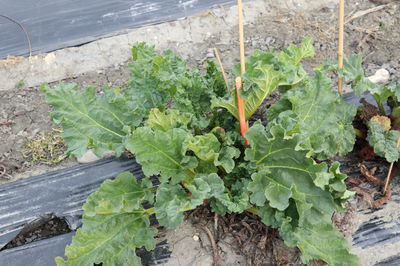 Is there still an active or bigger rhubarb breeding programme in Europe? Do you know one? We at Lubera took on this wrongly neglected vegetable/fruit species a few years ago. In a first step, we tested a number of varieties and then finally produced crosses that are now being tested and selected.
Is there still an active or bigger rhubarb breeding programme in Europe? Do you know one? We at Lubera took on this wrongly neglected vegetable/fruit species a few years ago. In a first step, we tested a number of varieties and then finally produced crosses that are now being tested and selected.
Rhubarb varieties – genetically very similar
Not so long ago, at least in horticultural plant production, rhubarb was rhubarb, and at most there were green-stalked and red-stalked rhubarb. In recent years, however, the diversity of varieties has increased, especially by rediscovering old varieties, but also by introducing everbearing rhubarb varieties, which, however, already have a long, over hundred-year history. Genetic studies have found that the majority of the varieties available on the market are very closely related, with many identical gene sequences. This means that there is little variance within the genome – making it all the more important to work with varieties and rhubarb types that are as different as possible.
Rhubarb breeding – benefit from the heterosis effect
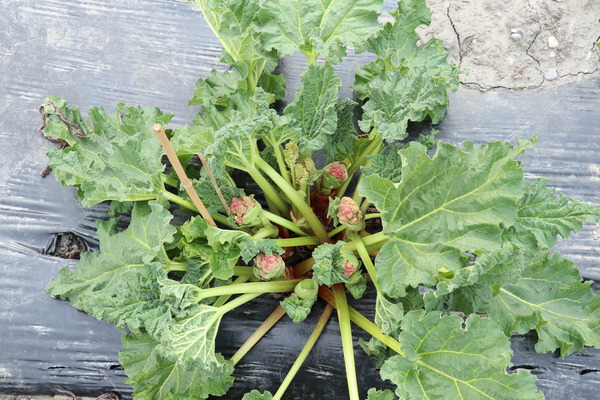
Picture: strong growing rhubarb seedling with a lot of flower buds
Rhubarb seeds are mostly genetically identical in larger plantings – and so in the past, seeds from such self-fertilisation were always used for propagation. This is also understandable because propagating via rhizome division is slow, complicated and expensive in comparison. Propagation via seeds has two main effects: first, we can assume that this type of propagation has historically produced many of the very closely related varieties described above. And secondly, because of widespread inbreeding, many varieties are also the results from fairly long inbred lines. And what happens if you cross two such varieties? It is likely that this causes a heterosis effect similar to that in hybrid breeding and in some of our crosses we see exactly this effect: varieties that grow extremely strong and provide gigantic yields!
More rhubarb diversity
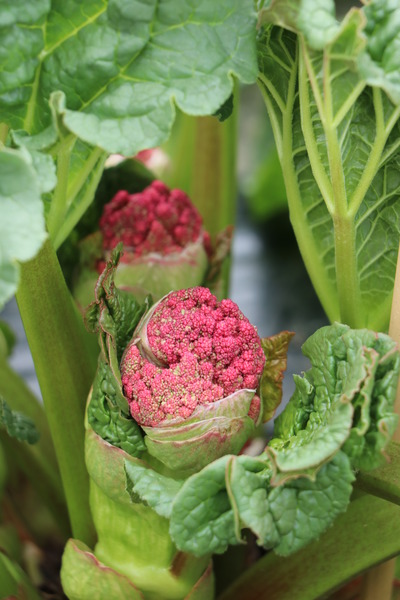
Picture: rhubarb with added value - Soon as an ornamental plant with a beautyful flower?
In the breeding method described above, we benefit from the “simplicity” of traditional inbred rhubarb, but of course we also want to bring more diversity to the rhubarb varieties. That's why we consciously use parents who are proven to be very different from the well-known varieties in commercial cultivation. On the centuries-long journey from China via Siberia and Russia to Europe, the various types of Rheum crossed over and over again – and it also makes sense to use some original species and rhubarb ancestors.
The goals of rhubarb breeding at Lubera®
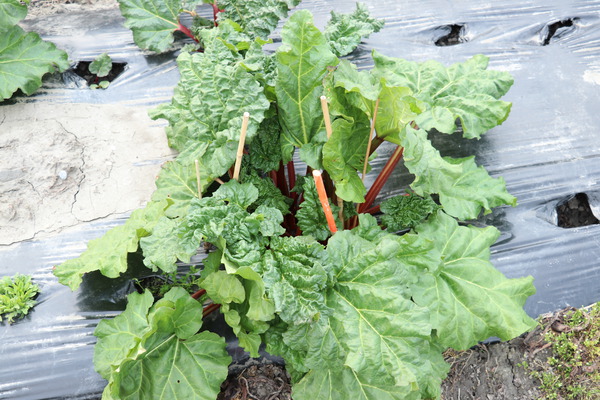
Picture: very stick means a positive valuation
Goals are very important in breeding because it is the only way to gain a clear view of the mostly large plant populations. But with all the focus on the goals you should never forget that at the end, if the plants are in a field, the result is usually or very often very different. ;-)
Nevertheless, we would like to briefly list our most important breeding goals:
- More yield, more vigour (surprisingly there is potential)
- Development of ornamental rhubarb with more compact leaves, which of course can also be used
- Red-coloured stalks from the beginning – which by the way is very difficult to reach in breeding
- More everbearing varieties
- Development of rhubarb varieties that produce many ornamental flowers and yet provide a reasonable yield
When are the first varieties of rhubarb from the Lubera® rhubarb breeding programme expected?
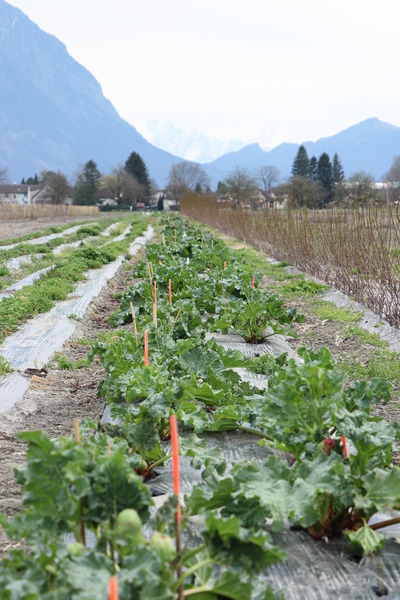
Picture: ruhubarb seedlings in the breeding field
Breeding takes time, but we hope that we can launch a first variety in 1-2 years; however, a bigger boost of new varieties can only be expected in 4-7 years. After all, we first have to digest all the surprises that our breeding plants are now presenting to us on the field...
